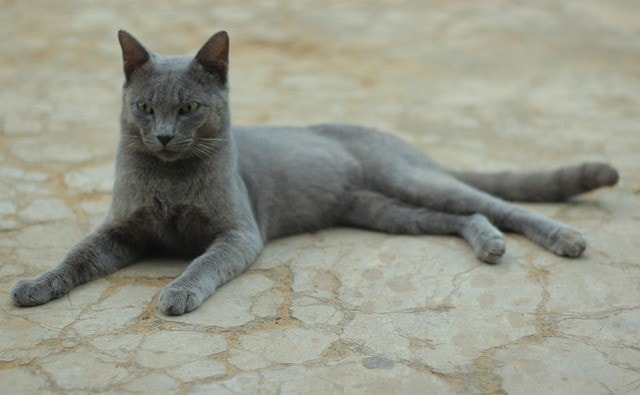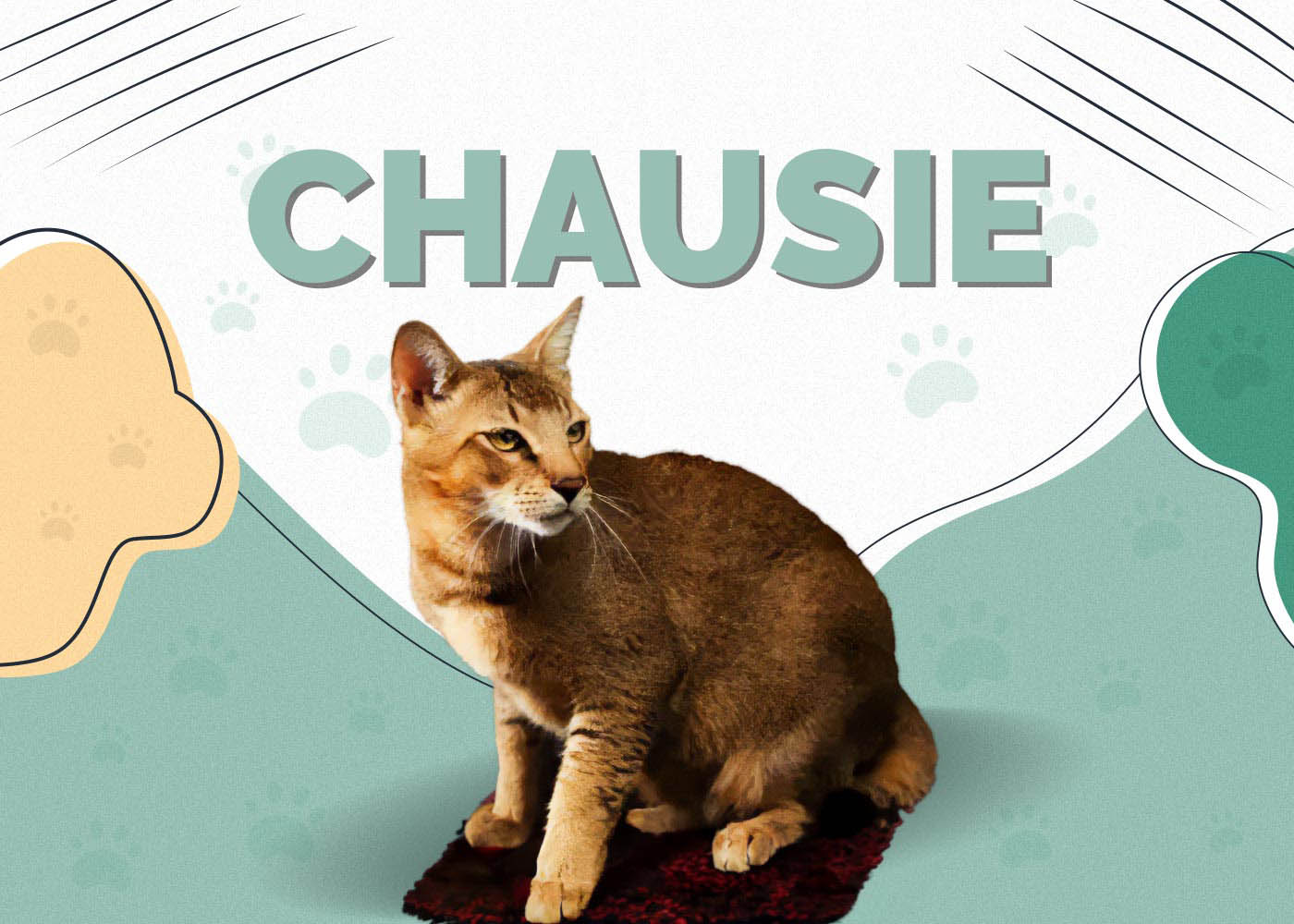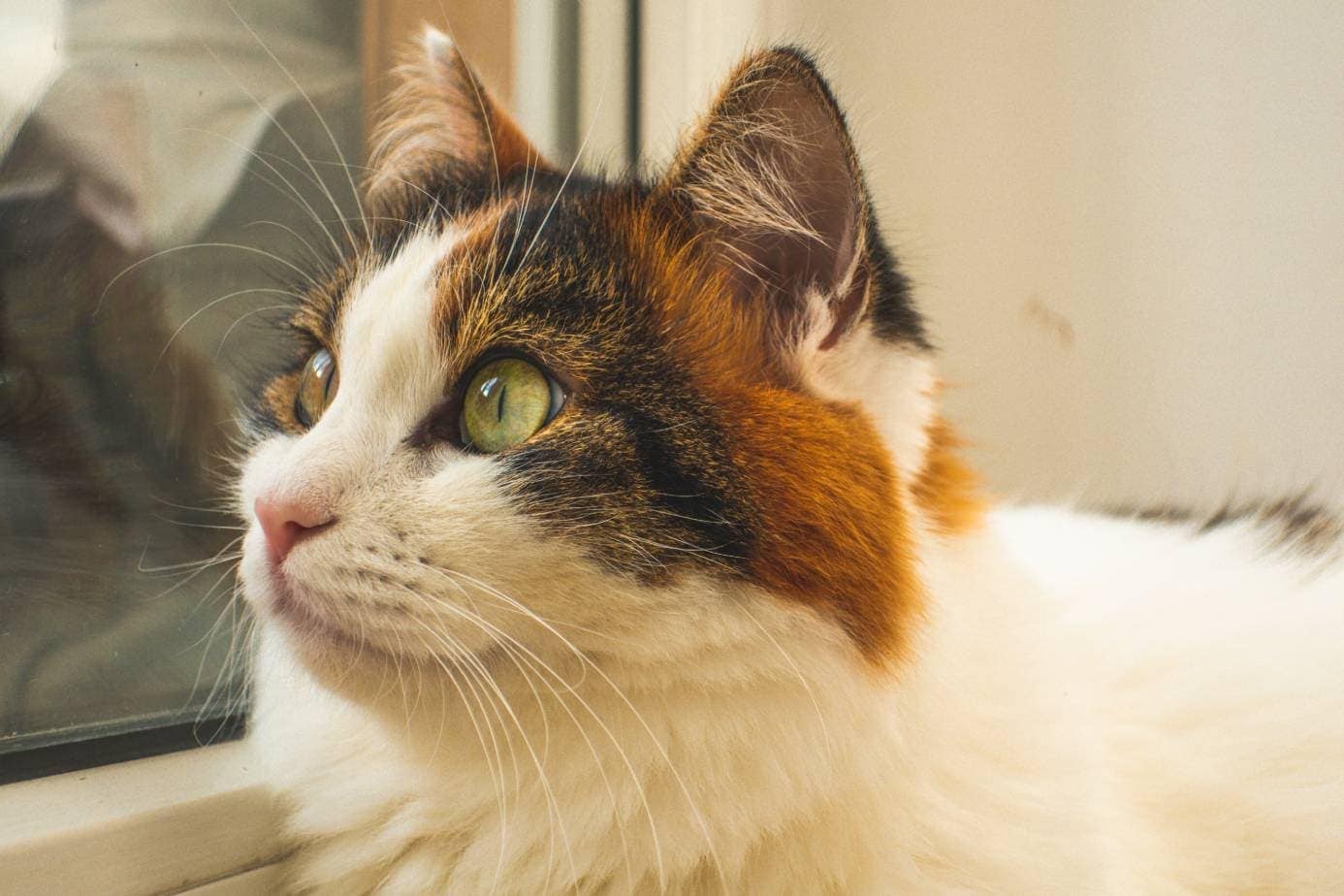Oriental Longhair Cat: Info, Pictures, Characteristics & Facts
Updated on
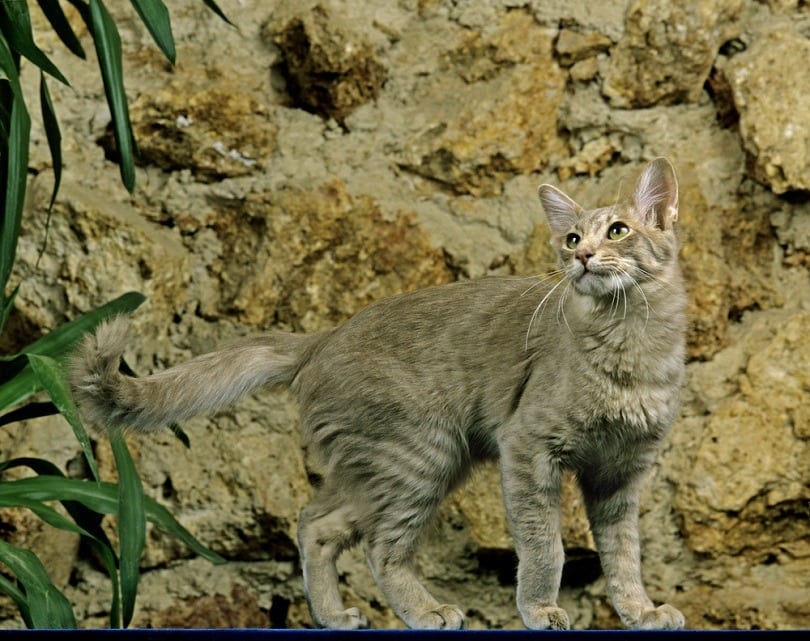
| Height: | 9–11 inches |
| Weight: | 9–15 pounds |
| Lifespan: | 12–15 years |
| Colors: | Blue, black, chocolate, fawn, cream, lilac, cinnamon, red |
| Suitable for: | Seniors, families with children, multi-pet households |
| Temperament: | Lovable, affectionate, curious, vocal |
The Oriental Longhair cat is an elegant-looking cat with a lovable, easy-going personality. Their distinct appearance makes them an eye-catching pet, but looks aren’t everything that this cat breed has going for them. Their personalities are unique too. If you’re looking to add a feline addition to your family, the Oriental Longhair may be perfect.
Oriental Longhair Cat Kittens
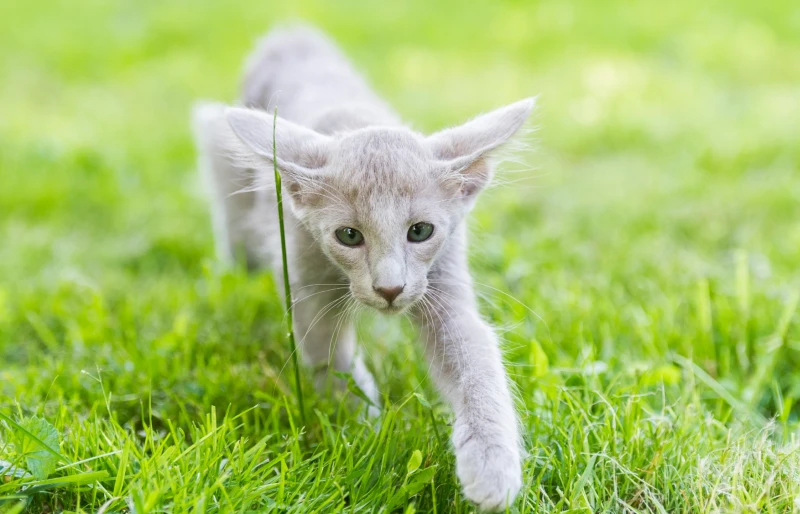
The Oriental Longhair cat is a relatively rare breed. Unfortunately, this means kittens aren’t cheap. Cats from show-quality bloodlines may have even higher price tags.
Some shelters and rescues will maintain waitlists for those looking for a specific breed and will notify you if an animal becomes available that meets your criteria.
3 Little-Known Facts About the Oriental Longhair Cat
1. Oriental cats come in more pattern and color combinations than any other cat breed.
The Oriental cat comes in both longhair and shorthair varieties. They have over 300 different coat and color combinations, including stripes, solid colors, and spots. They have even earned the nickname of Ornament cats due to their variations in appearance.
2. They are entertainers.
Similar to their Siamese relatives, Oriental Longhairs are vocal and fun-loving. These cats were born to entertain and are on a continuous search for mischief. They never fail to keep their families on their toes!
3. The Oriental Longhair is known by many names.
While the breed is officially recognized by the Cat Fanciers’ Association as the Oriental Longhair, it is also called the British Angora, Javanese, Foreign Longhair, and Mandarin.

Temperament & Intelligence of the Oriental Longhair Cat
Oriental Longhair cats are highly social, vocal, and intelligent cats. They don’t like being alone for long periods of time, so they do best in busy households where they have constant companionship. They get along equally well with humans and other animals. While they will always choose human companions first, cat friends will prevent them from developing separation anxiety.
This cat breed is almost dog-like in companionship qualities. They bond quickly and deeply with their owners and become their shadows. Orientals will talk your ear off too. They meow frequently and have distinct vocalizations to let you know when their bowl is empty, when they’re unhappy, or when they want attention. If you’re looking for a quiet cat, this breed is not for you.
As intelligent and energetic cats, Orientals frequently get into mischief. They get bored easily and have no problem finding ways to entertain themselves, often in a way that displeases their owners. Regular stimulation and exercise can tame these mischief-seeking endeavors, but this breed requires regular attention. Fortunately, their intelligence makes them easy to train, and most of their energy can be directed into appropriate activities.
Are These Cats Good for Families? 👪
Yes! Oriental Longhairs are excellent cats for busy families — in fact, the noisier and busier, the better. Orientals will happily join in the activity and noise-making, and they love to play and chase children.
This cat breed imprints strongly with their owners, so it’s important that they are adopted into a forever home. They don’t adapt well to changing environments and find it extremely upsetting. Although they will accept attention from almost anyone, they often choose a single person to bond with most.
Does This Breed Get Along With Other Pets?
Oriental Longhair cats get along well with other cats and animals. It is easier to integrate a kitten with other pets, but adults can adjust if given time.
Multi-cat households work well for Oriental Longhairs because they thrive on having company when their family isn’t around. Having a second cat may be the single best thing that you can do for an Oriental, as they quickly develop separation anxiety and become distressed when left alone. They are much less likely to engage in destructive behavior if they have a cat companion to keep them company.
This cat breed has an exceptionally high prey drive, so they don’t get along well with small caged animals. They easily mistake gerbils and hamsters for toys, and it’s impossible to train out this instinct.
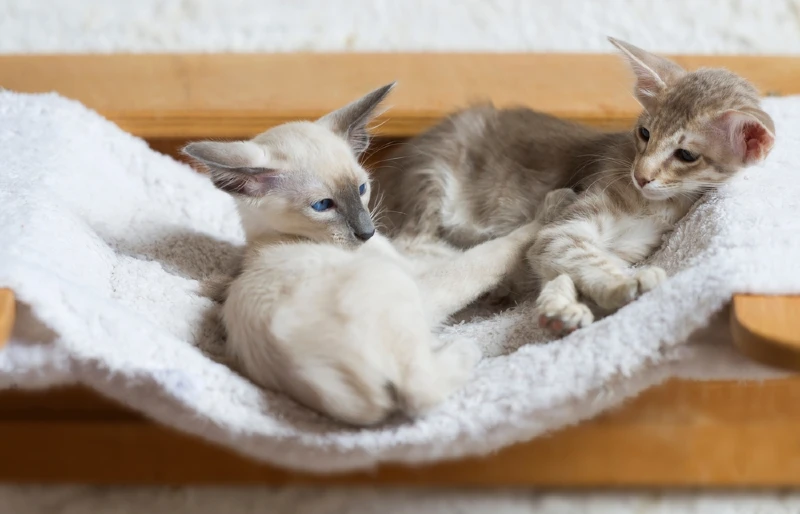
Things to Know When Owning an Oriental Longhair Cat
Food & Diet Requirements
There isn’t a special diet for the Oriental Longhair, but they are high-energy cats that do well on high-protein food. It is especially important to provide kittens with high-quality food that supports their rapid growth and energy levels.
Exercise 🐈
Oriental Longhairs are good at exercising themselves as a high-energy cat breed. They enjoy having a human or animal companion to play with but will just as happily jump and hop around on their own.
It’s good to keep climbing trees, activity centers, and toys available for Orientals to enjoy. Without proper outlets, they will use their environment to burn off steam, knocking things off countertops, climbing curtains, and marking up furniture.
Many indoor cats need a minimum of 15 to 20 minutes of active playtime per day to stay healthy, but the Oriental Longhair needs more than most. They will stay active well into their senior years if they are able to.
Training 🧶
The Oriental Longhair’s high intelligence makes them easy to train. They can pick up new commands with ease, and they have an intense need to please their owner, which is a unique feature for a cat.
With a little patience, you can teach your Oriental Longhair to do just about anything, from playing fetch to leash walking. They see training sessions as opportunities to bond and spend time with their favorite human, so take advantage of it!
Litter training this cat breed takes little effort. Many kittens are potty trained at their first exposure to the litter box; their mother often teaches them before they go home to their forever families.

Grooming ✂️
Despite being long-haired cats, Orientals are excellent self-groomers and will do most of the work for you. Brushing them out a few times a month will get rid of any loose hairs that they miss.
These cats have a unique hair texture that is silky and fine, and they don’t have an undercoat. Their hair looks shinier and sleeker than most long-haired breeds, and they shed less overall.
Since they love to cuddle, Oriental Longhairs are usually happy to partake in grooming sessions, though the sooner you start grooming your kitten, the easier they will adjust to the process.
Health and Conditions 🏥
Oriental Longhair cats are a generally healthy breed. However, since they are purebred pedigreed cats, there are a few inherited conditions to watch for. Reputable breeders will provide genetic and health information and the condition of the parents before you purchase a kitten.
- Kinked Tails and Crossed Eyes
- Bladder Stones
- Periodontal Disease
- Progressive Retinal Atrophy
- Liver Amyloidosis
- Dilated Cardiomyopathy
- Mast Cell Cancer
Serious Conditions:
- Progressive Retinal Atrophy — an inherited condition that causes gradual degradation of the retina and eventually leads to blindness
- Liver Amyloidosis — abnormal depositing of proteins in the liver; reduces liver function and can cause liver failure
- Dilated Cardiomyopathy — a genetic heart condition that is common in cats related to the Siamese
- Mast Cell Cancer — a type of cancer that causes nodule formation on the intestine, organs, and skin
Minor Conditions:
- Kinked Tails and Crossed Eyes — inherited characteristics from the Oriental Longhair’s Siamese relatives; they are cosmetic defects and do not affect the health of the cat
- Bladder Stones — the crystalization of urine that passes through the bladder
- Periodontal Disease — a disease of the teeth and supportive structures that can be avoided with proper dental care
Male vs. Female
There aren’t that many differences in the personalities of male and female Oriental Longhair cats.
Males tend to be more vocal and affectionate than females. Although they still bond most deeply with a single person, male cats are less selective and will be more social with a greater range of people and animals. Male cats that are not neutered will be prone to marking territory through urine spraying. With rare exceptions, this behavior can be curbed by having your male cat neutered prior to him reaching sexual maturity.
Conclusion
The unique physical appearance and personality of the Oriental Longhair make them an appealing pet. These cats require a great deal of attention and patience. They are high-energy animals that aren’t too independent. While they are suitable for busy homes and families with children, they should at least have a cat companion for times when they will be without their human family. The Oriental Longhair is not suitable for homes where they will be spending most of their time alone.
If you can match this cat’s energy and play demands, they will pay you back with love in spades. These cats are loyal and bond for life. They are guaranteed to take hold of a spot in your heart and become an active member of your family.
See Also:
- 28 Best Small Dog Breeds for Families (With Pictures)
- Asian Semi-Longhair Cat: Info, Pictures, Characteristics & Facts
Featured Image Credit: slowmotiongli, Shutterstock


